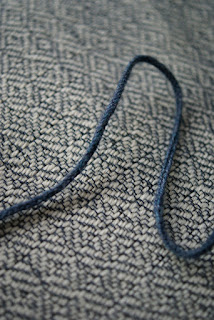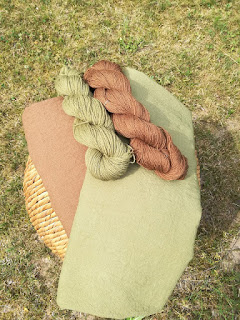Extracting fibre from the Stinging Nettle, Urtica dioica, is nothing new throughout Europe.
Ötzi, the Tyrolean Iceman (dated between 3400 and 3100 BCE), used nettle fibres for the fletching of his arrows, he secured the feathers with fine nettle thread.
Then there is an interesting find from Denmark. In Voldtofte a shroud was found which consisted of fine woven nettle fabric. The fibres were analyzed and the results showed that the nettle fibre or the fabric itself was imported from the Styria region in Austria. This shows how important nettle production must have been during the Bronze Age, though flax already was cultivated and used for fibre purposes, too.
Later, in the 18th century, there have been endeavours to commercialize nettle cultivation on a big scale in Europe, but since nettle only has a fibre content of ca. 10%, other fibre plants were preferred.
During WWI there was no chance for Germany to geht hold of cotton, especially needed for durable uniforms. So people were asked to collect nettle stems and to bring them to collecting points. Farmers got money for cultivating nettle. Posters were found throughout Germany:
It was only after WWII, that nettle and other native fibre plants in most parts of Europe were replaced with cotton, since it was available again and the production costs got cheaper and cheaper.
Now, here is my own little experiment with nettle fibre.
It started with a bit of already processed fibre which I got from a friend at Lauresham. These fibres are carded and bleached. I spun this test batch on a drop spindle and I like the result. I plan to weave a little test patch from it soon, to see how it will behave when woven.
So, the next step was to try to get fibre from fresh nettles. When Fimbulmyrk was here over the weekend, we took some tea with us and went into the forest. We gathered some nettle stalks and sat down on a big tree stump.
This is only one possibility to process nettles, there are many more and it seems that everyone doing this has their own tricks and preferences.
First of all we had to get rid of the leaves. But you can't strip them off like you wold do with peppermint, holding the tip and running your hand along the stem, as you would tear off some of the precious fibre, too. So you need to start at the bottom part. put on some gloves and pull the leaves and side stalks off very gently.
Now you should have some nice naked nettle stems. To get rid of the little hair which cause the stinging, run your hands along the stems a few times to brake off the hair.
In the next step you have to break the nodes. We took a random Stone from the ground and gently broke those thicker parts of the stem with it.
Now for the fun part: Scraping off the fibres with a knife while rotating the stem in your hand
Here is a little video showing the technique a bit closer:
What you end up with should look something like this:
With some of the fibres I then started a little experiment in itself. I made a simple cottage cheese by stirring some vinegar in warm milk. Then I took some of the fibres and put them in the remaining whey, weighted down with a saucer. I had initially planned to leave the fibre soaked only for some days, but life got in the way and I ended up with several weeks.
But I couldn't wait and since it was quite warm the fibres dried fast and I could do some test carding and spinning the same evening and I have to say, I was quite pleased.
Well, as I wrote, there were some weeks before I returned to my appartment. But that time wasn't nettleless, oh no! I camped at a medieval event and I had the opportunity to show people my endeavours in fibre extraction. They all were very interested, especially the children couldn't believe that this soft fibre once stung!
I told how to extract the fibres and showed how to card and spin them.
So, I guess, there is more to come soon! :D
And Fimbulmyrk seems to like working with nettles, too. When he arrived here for the weekend the last time, he showed me some lovely cord which he had made from nettle fibres and he brought me flowers! A whole bag full. Stripped ones. Well, nettle fibre, yes. And I like it a lot!
Oh, and the good thing about stinging nettle is, after stripping the leaves off and doing some hard work scraping, carding and spinning, you can reward yourself with some nettle tasties, like this pasta sauce frome nettle leaves, cream, salt, pepper and nutmeg.
What a plant!



























































